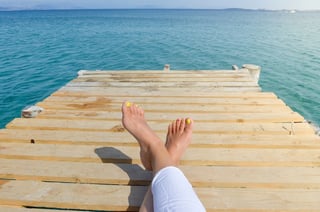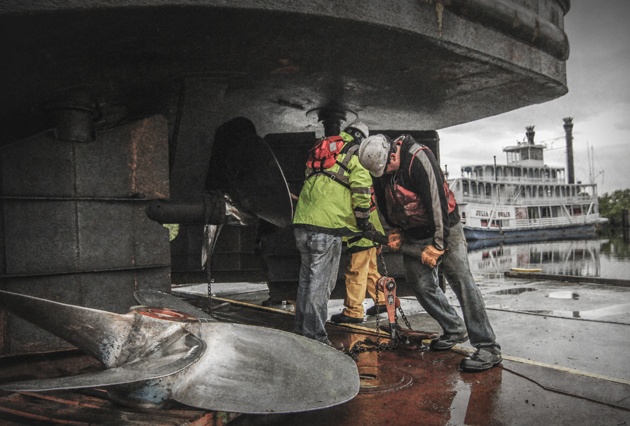Effective Dock Repair Work Techniques: Making Sure Architectural Honesty
Making sure the structural integrity of anchors via effective repair service techniques is extremely important for the durability and safety and security of marine centers. Subsequently, picking the right fixing materials, such as corrosion-resistant alloys and composite materials, is vital for toughness.
Examining Dock Damages
Examining dock damages is an essential very first step in making sure the architectural stability and safety and security of any type of docking center. This initial analysis entails a detailed examination to identify both visible and hidden damages. Key facets to examine include the dock's foundation, pilings, outdoor decking, and hardware. Each component should be looked at for indicators of wear, rot, deterioration, or various other kinds of destruction that could jeopardize the structural stability.
Architectural designers or certified assessors typically perform these assessments using specialized methods and devices. For example, undersea examinations could use finder devices or from another location ran lorries (ROVs) to identify immersed damage. Above water, aesthetic examinations are complemented by utilizing wetness meters and other analysis tools to reveal underlying issues not quickly noticeable to the naked eye.

Choosing Repair Work Materials
Choosing the suitable repair work materials is a pivotal action in the dock reconstruction process, one that directly affects the long life and efficiency of the fixed structure. Material option must be driven by elements such as environmental conditions, load-bearing needs, and compatibility with existing dock elements.
In addition to timber, composite materials are progressively popular as a result of their durability and reduced maintenance requirements. Compounds, normally made from a blend of plastic and timber fibers, use outstanding resistance to rot, bugs, and UV damages. For steel docks, choosing corrosion-resistant alloys such as galvanized steel or marine-grade light weight aluminum is important to prevent corrosion and guarantee architectural stability in saline water problems.
Epoxy materials and marine-grade sealers are vital for fixing cracks and securing joints, giving a waterproof obstacle and boosting the dock's overall strength. By diligently selecting high-quality products, dock repairs can accomplish durable outcomes, thereby securing versus future deterioration and making certain safe, reputable usage.
Architectural Support Strategies
Efficient structural reinforcement techniques are vital in making certain the security and durability of dock repair work. This method is particularly reliable for anchors subjected to heavy loads or harsh environmental conditions.
An additional essential strategy is the application of fiber-reinforced polymers (FRP) These products use high strength-to-weight ratios and exceptional resistance to corrosion, making them perfect for reinforcing wooden or concrete docks. FRP can be used in sheets or strips and adhered with epoxy materials This Site to improve architectural stability.
Bracing and anchoring systems also play an important role in architectural support. Cross-bracing, utilizing metal or wood beam of lights, can combat lateral pressures, reducing guiding and motion. Securing systems, such as helical piers or driven stacks, provide a secure structure by moving tons to much deeper, a lot more stable dirt layers.
Lastly, the assimilation of load-distribution plates can assist distribute weight a lot more evenly throughout the dock's surface, mitigating localized stress factors. These methods jointly make certain that anchors stay robust and risk-free, qualified of holding up against the rigors of their functional atmosphere.
Advanced Repair Approaches

An additional sophisticated strategy involves underwater welding, which enables repair work to be performed without the demand to dewater the area. This technique is especially helpful for resolving architectural problems in submerged dock elements, guaranteeing very little interruption to operations. Enhanced welding techniques, paired with robotic systems, provide accuracy and integrity, therefore expanding the life expectancy of the dock.
Furthermore, cathodic protection systems are implemented to avoid deterioration in metal dock structures. By using sacrificial anodes or impressed existing systems, these methods efficiently mitigate the electrochemical procedures that cause material wear and tear.
Finally, progressed monitoring modern technologies, such as architectural health and wellness monitoring (SHM) systems, supply real-time data on the problem of dock frameworks. These systems allow proactive upkeep and timely treatments, eventually ensuring the lasting architectural integrity of the dock.
Upkeep and Prevention
Maintenance and avoidance are essential concepts that underpin the durability and safety of dock frameworks. Regular examinations are critical, enabling early discovery of deterioration, potential weaknesses, and ecological effects. An aggressive method, including routine look for deterioration, rot, and structural changes, reduces pricey repair work and lengthens the dock's operational life.
Precautionary actions should include using safety coatings to metal parts to guard against corrosion and making use of treated wood to withstand degeneration. Additionally, making sure correct drainage and air flow can prevent water buildup, which is a common cause of structural deterioration. Including quality materials and adhering to maker standards throughout building and construction and repair service phases also play important duties in boosting sturdiness.

Training employees in dock upkeep best methods guarantees consistent application of safety nets. Leveraging technical developments, such as drones for evaluations and sensors for real-time surveillance, can better improve maintenance initiatives. By focusing on maintenance and avoidance, dock proprietors can make sure structural integrity, functional security, and cost-effective management over the dock's life-span.
Verdict
In conclusion, maintaining the architectural honesty of aquatic facilities requires detailed dock fixing techniques. Advanced repair work methods, paired with normal maintenance practices, make sure the dock continues to be secure and functional under varied ecological problems.
Guaranteeing the structural integrity of anchors via reliable repair techniques is critical for the durability and security of marine facilities.Choosing the suitable repair materials is a critical step in the dock remediation procedure, one that directly influences the longevity and efficiency of the fixed framework.Reliable architectural reinforcement techniques are vital in guaranteeing the stability and longevity of dock repairs. By prioritizing upkeep and avoidance, dock owners can guarantee structural integrity, functional safety and security, and economical administration over the dock's life expectancy.
In conclusion, maintaining the architectural honesty of aquatic facilities necessitates thorough dock repair methods.
Comments on “Comprehending the Expenses Involved in Dock Repairs”